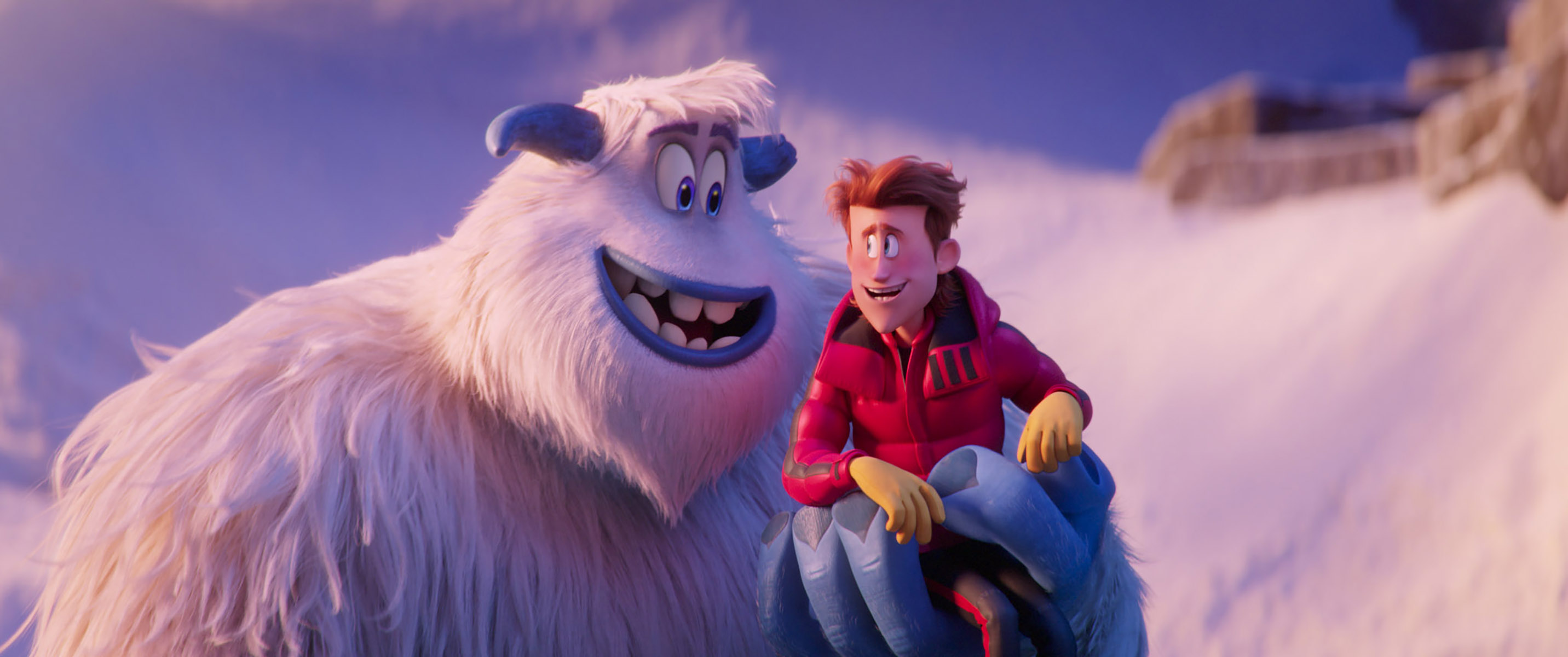
Characters are shown in a scene from the animated movie "Smallfoot." (CNS photo/Warner Bros. Pictures)
The 1987 film "Harry and the Hendersons" brought the legend of Bigfoot (aka the Abdominal Snowman, Sasquatch or Yeti) to the screen, and it remains one of the funniest and best family films I have ever seen.
The Henderson family, led by dad George (John Lithgow) and mom Nancy (Melinda Dillon), and their two kids, run into something on the way home after camping in the forest near Seattle. The family thinks the creature is dead and tie him to the roof of their station wagon. Alas, he is alive, and they name him Harry. Who can ever forget the swimming pool scene when Harry finally gets a bath? Okay, so maybe it was the power of the first three or four viewings that has stayed with me, but just thinking of it makes me laugh. (There was also a television series with the same title that ran from 1991-1993.)
Now the new Warner Bros. film "Smallfoot," directed and co-written (with Clare Sera) by Karey Kirkpatrick, flips the script entirely. From live action to 3D animation, from small-footed people tracking big-footed creatures, the story starts in a rustic village of Yetis in the snow and ice-covered Himalayan Mountains, above the clouds, rather than the forested green valleys below with the legendary "Smallfoot" people. But we'll get there.
The Yeti village is governed by a Moses-like character, the Stonekeeper (Common) who leads and teaches the peoples by rules etched in stone. Mysteriously, new stones and rules are continually added. The Stonekeeper's main message to the Yetis is for them to be happy. They are never to ask questions and should one arise, they should just push it down and it will go away.
Migo (Channing Tatum) is very scientific. He is also curious about signs that a Smallfoot (human) exists. One day he sees a crashed plane but doesn't know what it is. He also sees a Smallfoot foot print. Then he sees a Smallfoot drift off the mountain using a parachute and descend below the clouds. Now that he has seen the evidence that a Smallfoot exists he rushes back to the Stonekeeper to announce the news of the truth he has discovered.
But the Stonekeeper doesn't want to know the truth and banishes him from the village until he can tell the Yetis the real truth. Migo knows what he saw and is going to prove it. He is surprised when he meets four Yetis from the village who have formed the secret Smallfoot Evidentiary Society. The leader is Meechee, the Stonekeeper's daughter (Zendaya). Together they lower Migo down through the clouds in search for the Smallfoot.
Below is a television wildlife celebrity host named Percy (James Corden) working with his producer Brenda (Yara Shahidi) to find a way to boost their falling ratings. He tries to get Brenda to put on the costume of the legendary Bigfoot, a creature no one has ever seen, so they can create a discovery moment and record it for television. Brenda refuses and lectures him on the value of journalistic integrity and the value of conscience.
When Migo falls to earth, he and Percy find each other, and while Migo is open and interested, Percy is terrified. They are unable to communicate at first but develop a kind of sign language. Migo is so thrilled to find the Smallfoot Percy that he wraps him in a sleeping bag and takes him back up the mountain.
But even in the face of real evidence, the Stonekeeper convinces the Yetis that what they are seeing is false. He shames Migo into recanting what he knows to be true. The Stonekeeper takes Migo into the mountain to show him exactly how and why he maintains control over the Yeti — and it has to do with fear.
Advertisement
I have to admit, animated films are not my favorite genre, but every once in a while one surprises me. The children at the advance screening loved the film but, in many ways, "Smallfoot" is a contemporary and relevant parable for teens and grownups about some key themes: believing scientific facts and the truth they evidence, and communication as the way to resolve fear-induced racial violence and conflict.
This is a film about something existing that you think didn't exist; it's about myths we believe and promote that prove to be false, and risking communication rather than reaching for weapons and calling up armored tanks when we don't understand "the other."
Another animated feature I appreciated a lot was the 2013 Dreamworks animated film "The Crudes."
It only took a few moments to realize that the filmmakers had ripped off Plato's Republic to use his analogies of the cave, the sun and the line to convince people they had to get out of their old ways of being and think, to use philosophy to grow as citizens.
If you look carefully, the writers use the very same analogies in "Smallfoot." They are asking us to trust the information we receive through our senses (as Aristotle, Plato's student, taught) and engage in the world as responsible citizens.
In Smallfoot the world is made up of creatures who are different, but who, through willing communication and respect, might just be able to get along if they are willing to take a risk and let go of the old ways.
A word of warning: beware of Himalayan spiders.
[Sr. Rose Pacatte, a member of the Daughters of St. Paul, is the founding director of the Pauline Center for Media Studies in Los Angeles.]







